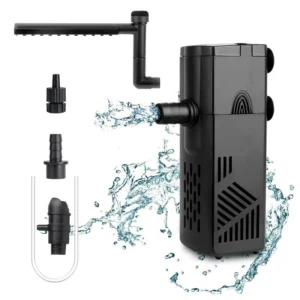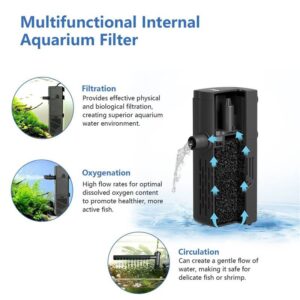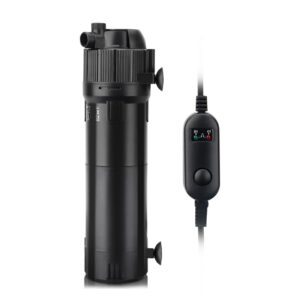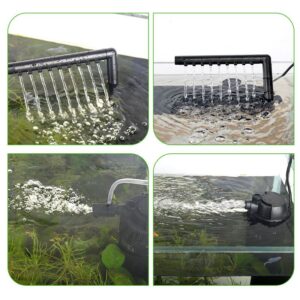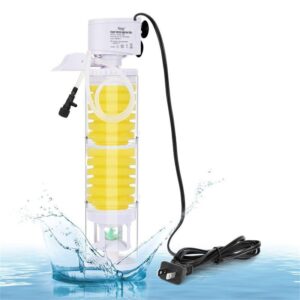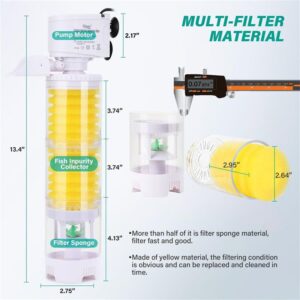Kits to Make Your Tank Filtration Better
A filtration system is among the vital components of an aquarium. Therefore, it requires attention for its selection, setting up, and maintenance. Among the four filtration system types, internal filters are the most unique.
In this article, you’ll learn about the role of a filtration system in a tank, a comparison between different filtration system products, and how to improve the performance of your filtration pump in your fish tank.
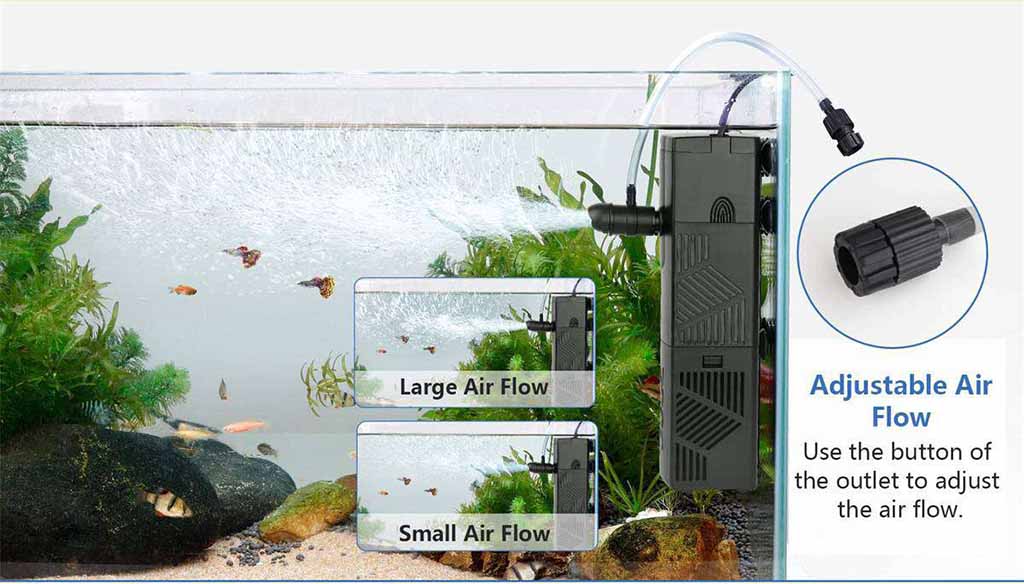
Water Filtration System for Fish Tank
A water filtration system is a key component of any fish tank. It removes the feces, food waste, fish waste, and other dirt from the water and keeps the tank clean. It filters the tank’s water in three ways.
Chemical Filtration
In this filtration, chemical additives help remove the harmful dissolved materials from the tank. The different materials that you can treat with chemical filtration include phosphates, silicates, synthetic polymers, food coloring, brown tannins, and malachite green. Activated carbon filters are widely used for chemical treatment.
Mechanical Filtration
Mechanical filtration removes the solid and suspended materials from the tank. Left-over food, fish waste, and other debris are examples of such waste. It’s the most basic and required filtration process for any fish tank. Filter socks, Fleece rollers, Filter floss, foam pads, filter pads, and Sponges do the mechanical filtration.
Biological Filtration
Biological filtration uses live organisms to remove harmful materials from the tank. The entire tank’s water passes through the porous biofilters. These biofilters house different beneficial bacteria, i.e., aerobic and anaerobic bacteria. These beneficial bacteria break down the ammonia to nitrite and then nitrite into less harmful nitrate.
Role of Filtration System In a Tank
Here are some key roles of a filtration system in a fish tank.
Waste Removal
It plays a vital role in keeping the tank water clean. A filtration system traps the solid waste and breaks down the liquid waste into less harmful substances. Mechanical filtration removes the suspended waste and clears the water.
Oxygenation
An ideal filtration system continuously circulates the water. It also improves the oxygenation of the system. Oxygenation and water circulation make a tank a place to live.
Water Parameter Stabilization
Stabilization of the tank’s water parameters is crucial for any tank. A filtration system helps to keep them stable, i.e., temperature, hardness, pH, etc.
Control Over Algae Growth
It helps to avoid waste accumulation in the tank and avoid speedy algae growth. Left-over food and fish waste act like a catalyst for algae growth.
Toxin Neutralization
It neutralizes the water by reducing the toxicity of the water, i.e., converting ammonia to nitrate.
Support Beneficial Bacteria
A filtration system promotes the beneficial bacteria’s growth. These beneficial bacteria improve the biological filtration of the tank.
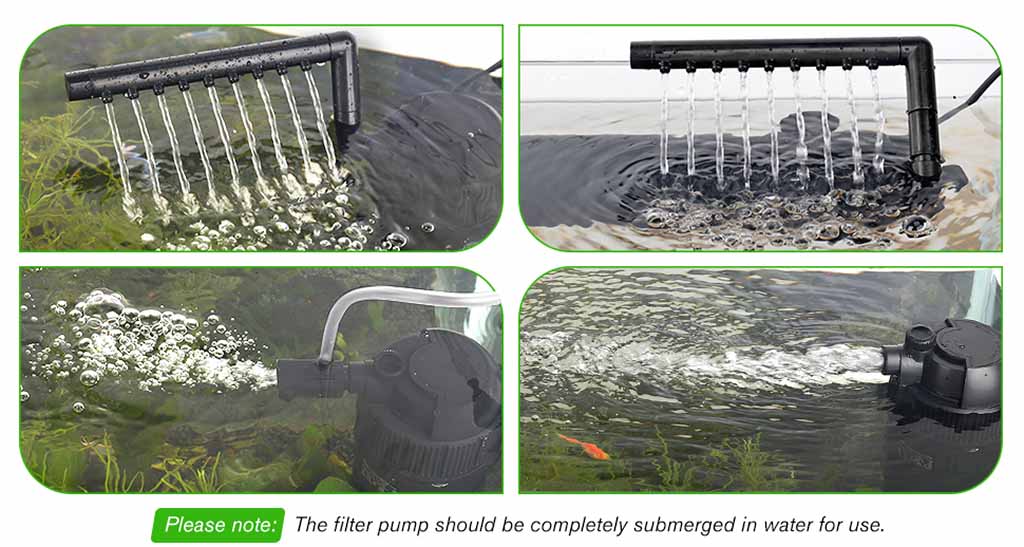
Aquarium Filtration Kits
Here are 3 different filtration systems for your aquarium. These filtration systems have diverse capabilities. The comparison, pros, and cons are in the following.
Comparison
| Features | Hygger Power Aquarium Internal Filter 081 | Hygger Fish Tank Filter Pump 032 | Hygger Aquarium Internal Power Filter 040 |
| Filtration Option Features | 3-in-1 Mechanical, Chemical, Biological | 4-in-1 Water Purification, Filtration, Oxygenation, Circulation | 3-in-1 Mechanical, Chemical, Biological |
| Tank Size Suitability | 3–20 gallons (10W) 20–70 gallons (25W) |
Up to 80 gallons | 2–30 gallons |
| Pumping Capacity | 158GPH/264GPH | 210GPH | 60GPH/160GPH |
| Flow Adjustability | Yes | Yes | Yes |
| Noise | Ultra-quiet | Ultra-quiet | Ultra-quiet |
| Filter Media | Yellow filter material, Big removable filter box | Activated carbon filter cotton | Ceramic balls, Activated carbon, and sponge |
| Maintenance | Disassemble sections Filter sponge core adjustment |
Submerge pump during use, Unplug power before cleaning | Complete set included |

Here are the pros and cons of each previously mentioned filtration system.
Hygger Aquarium Internal Power Filter
| Pros | Cons |
| Provide all three filtration at a time, i.e., mechanical, chemical, and biological. | Difficulty in maintenance. |
| Available for different sizes of tanks, i.e., 2–8 gallons: 60 GPH 10–20 gallons: 120 GPH |
It’s not suitable for micro fish less than 1cm |
| 15-30 gallon: 160 GPH | |
| You can control the flow rate as it provides a flow adjustability option. | |
| You can keep it in your room because it’s ultra-quiet. |
Hygger Fish Tank Filter Pump
| Pros | Cons |
| Multipurpose filtration system, i.e., Water Purification, Filtration, Oxygenation, Circulation | Difficulty in cleaning |
| A timer with a UV bulb helps you to keep control of bacterial growth | |
| It can help up to 80 gallons of saltwater aquariums | |
| 1-year warranty keeps you on the safe side | |
| Quiet operation |
Hygger Power Aquarium Internal Filter
| Pros | Cons |
| It provides control of water flow and oxygenation of the tank | Airflow pressure may be too strong |
| Advanced design with disassembled sections and strong suction cups | |
| Suitable for small fish as it has an anti-sucking fish filter port | |
| Easy to monitor due to the yellow filter material | |
| It is 3-in-1, i.e., filtration, oxygenation, and water circulation | |
| It comes with a traditional sponge box and a fish impurity treatment box | |
| It has multiple filter media |
Make Your Tank Filtration Better
Before selecting an ideal filtration kit for your aquarium, there are several things that you need to watch closely. Such different aspects are in the following, with appropriate examples.
Flow Rate
Choose a filter that filters the volume of the aquarium at least 4 times per hour. For example, for your 20-gallon fish tank, a 10W Hygger Power Aquarium Internal Filter is most suitable. You can adjust the flow rate up to 158 GPH. However, if you are going to more than a 20-gallon tank, then a 25W Internal Filter is most suitable.
Tank Size
Tank size is another aspect that will help you to select a suitable filtration system.
Bio Load
Bio load is another important aspect of selecting an appropriate filtration system. If you have a large tank with a heavy bio load, i.e., in an 80-gallon tank, then an advanced filtration system will help you clean your tank. An example of such a filter is a hygger Fish Tank Filter Pump. It has a timer UV bulb and does mechanical, chemical, and biological filtration at the same time.
Maintenance
Maintenance of a filter sometimes proves very hard. Therefore, you have to need a filtration system that is easy to operate and maintain. A hygger 081 internal filter is an example of such a filter. It has yellow filter sponge media which you can easily detect when there is a need to clean it. It has multiple filtration stages that reduce maintenance and create ease of cleaning. Moreover, it helps in water change.
Filter Type
There are four types of filtration systems, i.e., HOB, internal, canister, and sump filter. The selection depends on tank size, bioload, ease of maintenance, etc. HOB goes well with small tanks. Canister filters are the ideal filters for large tanks with high bio load. Internal filters are compact and suitable for smaller options. Sump filters are the best for large tanks with a sump area.
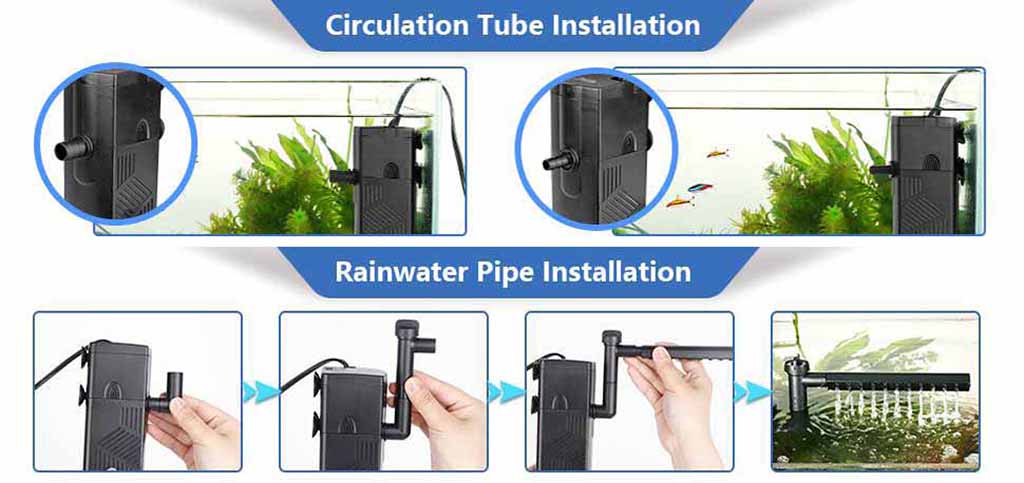
Does a Filtration Pump Always Need to Be On
Yes, a filtration pump, heater, and air pump should always be on in an aquarium. You can only shut down during water changes, feeding hours, or other maintenance tasks in the tank. Like this, here are some other vital tips for the filtration pump.
- Use a pre-filter sponge as it traps the mechanical debris along with slowing down the water intake flow.
- Choose the appropriate filter according to your tank conditions.
- Place the pump in such a strategic space that there will be no dead spot in the tank.
- Clean the pump at frequent intervals to avoid clogging and other damage.
- Continuous pump operation raises the water temperature. Therefore, keep an eye on the temperature and maintain it properly. You can use a thermostat to control the water temperature.
- Use some backup power source in power shortage hours, i.e., a battery source.
- Do a routine checkup of the filtration pump.
In Summary
The filtration system plays a vital role in any fish tank by removing and diluting the waste. It also helps keep the water parameters in optimal condition. The Fish Tank Filter Pump is suitable for large tanks and provides numerous features. Aquarium Internal Filter is easy to maintain and has several filtration stages. The Internal Power Filter does well with the ultra-quiet operation. Keep running the filter pump all the time to clear the water.

